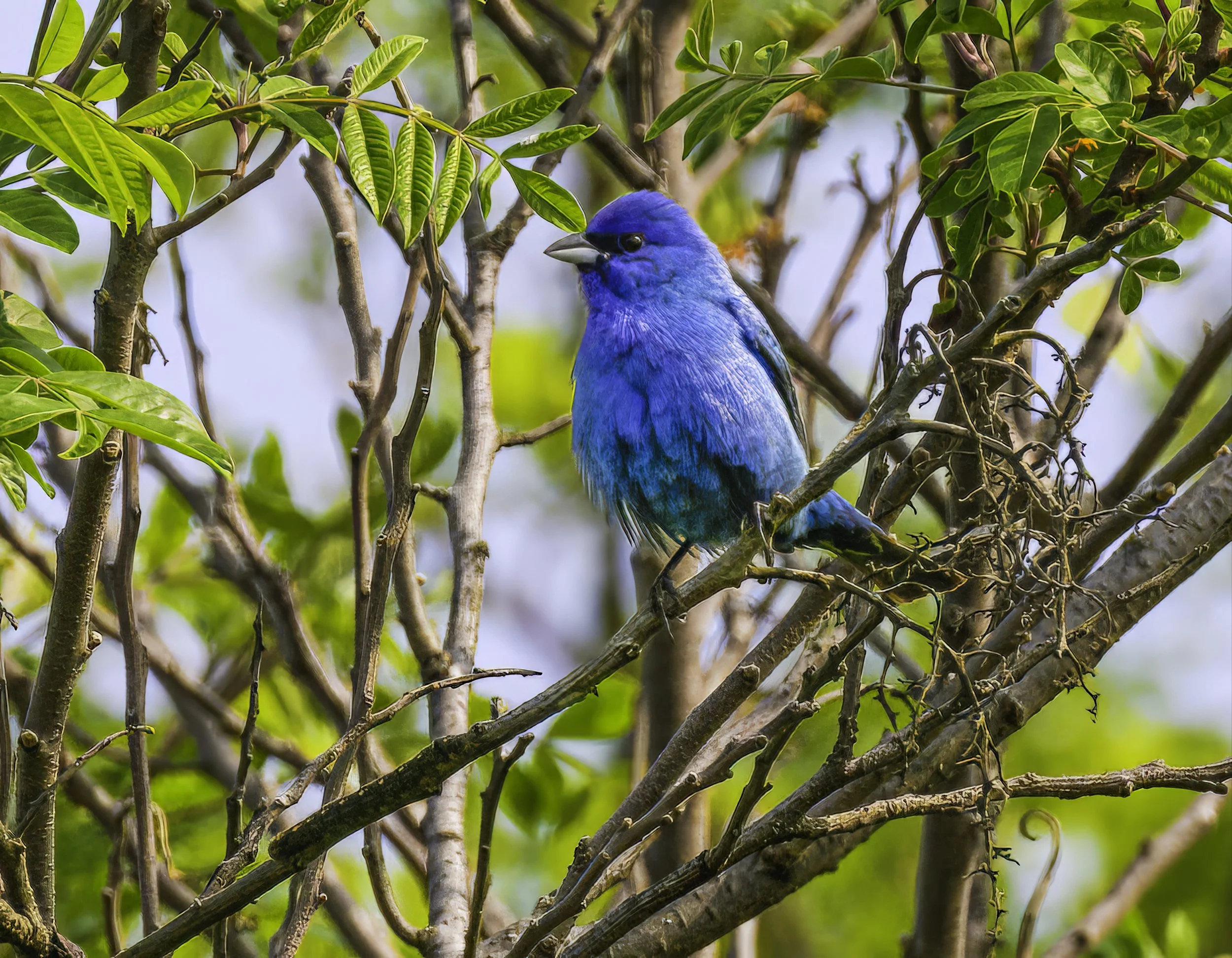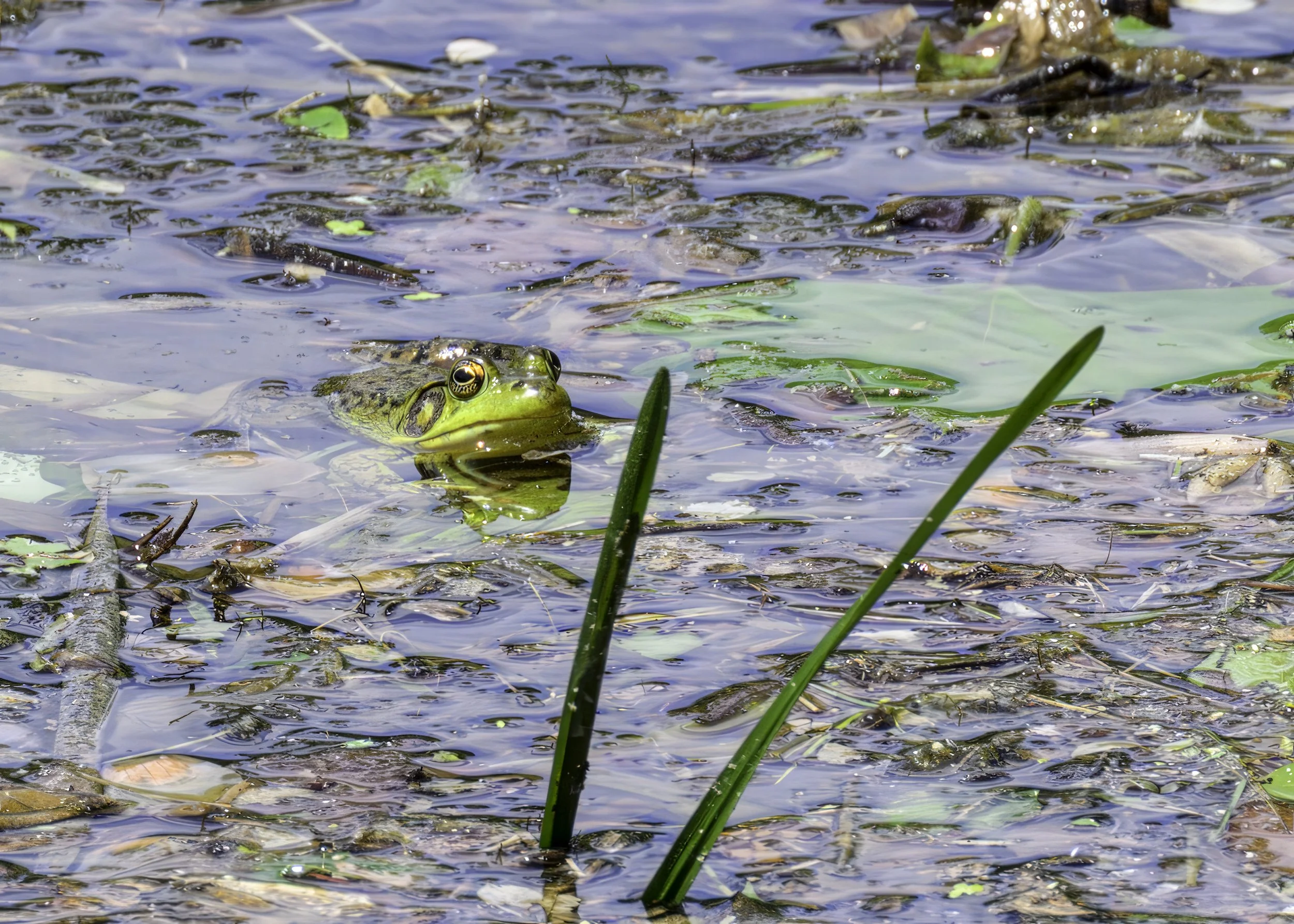The Silloway Count (Part I)
A very wet 1777 Trail…..
Organized by the Trailside Museum and Zoo of Bear Mountain State Park, two formal wildlife surveys of Bear Mountain and Harriman State Parks are carried out each year. A Winter survey, known as the Orth Count, and a Spring survey, the Silloway Count, involve teams of naturalists working over a a 10 day period to document the birds, mammals, reptiles, amphibians, odonates, insects, botany and any other organisms of interest of the 52,000 acre region. This provides a fuller view of the wildlife in our forests. The Silloway Count started in 1988 and has been carried out annually since 1990. An excellent example of “Citizen Science”, the surveys are carried out by volunteers with backgrounds ranging from professional naturalists and biologists to nature enthusiasts. The team of 5 that I worked with covered the areas of Bear Mountain, Doodletown, Iona Island, and the Bear Mountain riverfront. We began our day early on Monday, June 2, by hiking the 1777 trail from Severn Lakes Parkway heading east towards the historic site of Doodletown.
Indigo bunting Nikon Z8 with Nikon Z 100-400 mm @ 400. 1/1000sec, f/7.1, ISO 180
One of our first sightings was the Indigo bunting pictured above. While photographing this beauty, we heard the call of the Barred owl far off in the distance. One of the members of our team does a fantastic job of imitating that call and let loose with a booming echo to the bird. One of our mentors in years past advised us that if we were to call back to the bird, we might hear him respond. “But”, he advised us, “you usually have to wait 10 minutes to hear the owl return your invitation”. Sure enough, 10 minutes later, the owl called once again. This time, however, he was much closer. Eventually, we were able to briefly spot him before a Hairy woodpecker flew in and chased the much bigger owl off his turf. I have a great shot in my “mind’s eye”, but sadly no image to relay to you here.
Some severe storms over the past several years have made the trail down into Doodletown all but impassable in certain sections, so we were limited in how far we could head down the mountain path today. Rainy conditions the past few days had made the trail quite wet and muddy as well, but we were able to hike down about half way before we were forced to turn back. Along the way, we observed and recorded a number of species to add to our day’s count. We were not just counting birds today, so this little Pickerel frog hopping from puddle to puddle in the muddy path was a nice addition to the list.
Pickerel frog
On a count like this one, everything is fair game. This mushroom, the Blackfoot polypore, is an inedible variety normally found on the branches of broad-leafed trees. It is most commonly found here in the east between May and July.
Once we turned back up the trail, we regrouped and headed down to an access into Doodletown where the Lemmon Road leads down into the Reservoir. Along the way, we encountered a fair amount of bird song. The Cerulean warbler is known to breed here and while we could hear the bird clearly, we had trouble finding him up in the canopy. This image is of one of the Ceruleans I photographed on a previous hike along this pathway. As is the case with many warblers at this time of year, they are striking in their radiant breeding plumage. This is one of those birds whose name really does aptly describe it.
Chipping sparrows Nikon Z8 with Z 100-400 @ 240mm. 1/1000 sec , f/8, ISO 640
Further along the dirt road, we found a group of 4 Chipping sparrows interacting with one another. As we advanced towards them, they simply moved further down the path and continued to chase each other from one side of the road to another. We never could really determine what the purpose of this action was (if indeed there was a purpose). Eventually, they flew off into the forest.
When we finally reached the reservoir, we were greeted by a lone Double-crested cormorant. One of the most prominent characteristics of this bird is its deep azure eyes. The bird seemed to be quite comfortable with our presence, but eventually he did lift up and flew down Doodletown Brook towards the Hudson where we do see Cormorants fairly often. Near the spot where we first saw the cormorant, we spotted a second species of frog for the day…the Green frog.
A Green frog was found partially submerged in the waters of the reservoir. Their call, heard from several more of his species on the other side of the pond, is said to be reminiscent of the strumming of a banjo. Click the button below to hear his call and the calls of other frogs you may hear at a nearby pond.
Wood turtle
The last two images of this leg of our day’s journey through the park are the Wood turtle seen above and the Zabulon skipper below. This Wood turtle’s carapace was worn almost smooth leading our chief naturalist in our team to surmise that this individual could be as old as 50 years. The fact that his plastron is concave indicates that this species is a male. By the look on his face, I think we better put him back down on the ground!
The little Zabulon skipper seen below is a small butterfly found from Wisconsin east to the East Coast and as far south as Panama. This little butterfly is most commonly found along woodland edges, and near roads where there are streams nearby. This individual was in fact next to a “seep” very close to the reservoir.
With the time running short and still having a fair amount of territory to cover today, we heading back down off the mountain to survey Iona Island in the Hudson River. Check out part II in the following post.
Zebulon skipper









